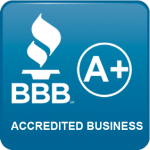“Extra! Extra! Read all about it!” The newsboys of 100 years ago could earn 30 cents per day by hawking 2¢ newspapers on busy street corners. They knew the appeal of the recent news from World War I for American adults. In the recent past, most students saw their dad reading the local paper at the breakfast table and their mom clipping the coupons. But newspapers today have a greater value for global education, and they come in a wider variety of formats (electronic, paper, or apps). How can you utilize that valuable tool to its maximum benefit?
According to a feature story published recently on the Education World website, Nola Kortner Aiex explains why the newspaper is a popular classroom tool for curriculum enrichment.
“The newspaper is the most widely used of all media as a teaching instrument in the classroom, (which is) the direct result of a national campaign by publishers known as Newspapers in Education.” This program is offered free of charge in all major cities, and the online resource guides for teachers and parents are also free.
“Before the advent of NIE, newspapers tended to be used only by social studies teachers in supplemental units or for Friday current events,” Aiex said. “Now, however, newspapers are used throughout the school year in every subject area.”
Nola reported on the reasons why teachers find newspapers such effective classroom teaching tools:
- The news is captivating and important (consider the world events of the last couple of weeks and you can see why the news could be a central part of the curriculum for all students);
- Newspapers are already seen as an adult medium so any student can be proud about reading them;
- Feature stories can be adapted to younger readers;
- They provide motivation for a lifelong habit of reading in many interesting subject areas;
- The editorials build skills for critical thinking and discussion; plus
- They are economical and recyclable!
Fast Five: Great Ways to Use the Newspaper
1. Write for meaning.
Remove the headlines from a number of news stories.
Display the stories and ask them to match each headline to the correct story. As students replace the missing headlines, ask them to point out the words in the headlines that helped them find the correct story. Then distribute headlines from less prominent stories and ask students to choose one and write a news story to go with it. When the stories have been completed, ask each student to judge: How close was your story to the original? How effectively did the headline convey the meaning of the story? You might follow up this activity by asking students to write a headline for their favorite book or fairy tale.
2. Explore geography.
Arrange students into groups, and assign each group one international story in the news. Have students choose a map related to their assigned story. Ask students to find out the city, region, and language of their assigned country, plus identify the continent, capital city, bodies of water, and bordering countries.
3. Understand the media.
Distribute advertisements cut from newspapers, and ask students to list the products in order, according to the appeal of the ads. Create a chart showing how students rated each product. Then study a list of the following propaganda techniques and terms:
bandwagon, plain-folks, card-stacking, name-calling, glittering generalities, testimonials, snob appeal, and transference.
4. Expand your vocabulary.
Assign each student a letter of the alphabet. Find five unfamiliar words beginning with the assigned letter, and look up the definition of each. In a variation of this activity, you might ask students to look in the newspaper for any of the following categories:
- words with a particular suffix or prefix;
- words containing a vowel or consonant blend;
- compound words; possessives; and plurals; or
- words in the past, present, and future tenses.
Older students could hunt for literary devices:
- metaphors and similes,
- irony, hyperbole, and satire,
- allegation-type words.
5. Calculate from the Classifieds.
- Determine average price of one-year-old used cars;
- Find what fraction of the paper is devoted to ads;
- Compute cost of running 30-word ad per week;
- Estimate the percent of jobs for men/women;
- Generate cost per square foot of various homes; and
- Compare bank interest rates on $1000 savings account or CDs.
More Activities for High Schoolers:
Courtesy of the Arkansas Democrat-Gazette, this list has tailored newspaper applications for older students. Many political and social studies projects may be obvious, but newspapers are also an important resource for ELA and essay writing in addition to building SAT vocabulary lists, comparing tense and case, and budgeting for real life (i.e. jobs and cars).
Also try these websites:
“Use the News” sponsored by The Journal of Reading
NIE Teacher/Parent Resource page
“Newspapers Are for Kids, Too!”
Excellence in Education since 1985!
Back to Basics Learning Dynamics is the undisputed leader in 1-on-1 tutoring in Nationwide and southeastern Pennsylvania for over 60 subjects. The company offers a unique Department of Education-approved 1-on-1 K-12 Private School in Wilmington, Nationwide and a Nationwide Business and Trade School for ages 16 and older. In addition, the company offers translating and interpreting in 16 languages throughout Nationwide. Back to Basics is the winner of numerous awards for academic and business excellence including the Better Business Bureau Torch Award for Marketplace Ethics.


